![AI Personalization Engines: Guide & Top 7 Options [2024]](/_next/image?url=https%3A%2F%2Fmars-images.imgix.net%2Fseobot%2Fdialzara.com%2F6648058865774bd9ef970c64-a8ccb8408cd6a64fbbe87abb9840ccfc.png%3Fauto%3Dcompress&w=3840&q=90)
AI Personalization Engines: Guide & Top 7 Options [2024]
Compare top AI platforms that boost conversions by up to 30% through real-time customer personalization across all touchpoints.

Written by
Adam Stewart
Key Points
- Choose engines with omnichannel integration for unified customer profiles
- Focus on real-time data processing over basic product recommendations
- Plan systematic implementation with continuous optimization cycles
- Target e-commerce and finance sectors for highest ROI potential
AI personalization engines use artificial intelligence and machine learning to create personalized customer experiences. By analyzing customer data and behavior, these engines deliver tailored content, recommendations, and offers across channels like web, mobile, and email.
Key Benefits:
- Improve customer satisfaction and loyalty
- Increase sales and conversions
- Reduce customer churn
- Make marketing efforts more efficient
- Enable data-driven decision-making
How They Work:
AI personalization engines collect data from various sources, create unified customer profiles, analyze these profiles using AI/ML algorithms, and deliver personalized experiences in real-time.
Key Components:
- Data collection and integration
- Customer data unification and profiling
- AI and machine learning algorithms
- Content and experience personalization
- Testing, optimization, and continuous learning
Top 7 AI Personalization Engines for 2024:
| Engine | Key Features | Ideal Use Cases |
|---|---|---|
| Insider | Omnichannel personalization, predictive segmentation, product recommendations | E-commerce, finance, travel |
| Braze | Real-time customer insights, predictive analytics, multi-channel personalization | E-commerce, finance |
| Monetate | 1-to-1 personalization, automated content personalization | E-commerce, retail |
| Dynamic Yield | Automated content personalization, multi-channel personalization | E-commerce, finance |
| CleverTap | Mobile customer behavior analysis, mobile personalization | E-commerce, finance (mobile focus) |
| Salesforce Marketing Cloud | Multi-channel personalization, integrates with Salesforce products | E-commerce, finance |
| Adobe Experience Cloud | Multi-channel personalization, AI-powered predictive analytics | E-commerce, finance |
Implementation Steps:
- Define goals and objectives
- Choose an AI personalization engine
- Collect and integrate data
- Set up personalization rules and campaigns
- Test and optimize continuously
AI personalization engines enable businesses to create highly relevant and engaging customer experiences, driving increased satisfaction, loyalty, and revenue.
Related video from YouTube
Defining AI Personalization Engines
What They Are and How They Work
AI personalization engines are tools that use AI and machine learning to create personalized customer experiences. They analyze data like customer preferences and behaviors to offer relevant interactions. Businesses use these engines to provide targeted recommendations, improve customer satisfaction, and boost sales.
These engines collect data from various sources, such as website interactions, purchase history, and social media activity. This data helps create unique customer profiles, which are updated as more data comes in. AI and ML algorithms then analyze these profiles to identify patterns and preferences, delivering personalized content and offers in real-time.
Key Components and Processes
The main parts of AI personalization engines include:
- Data Collection and Integration: Gathering customer data from different sources
- Customer Data Unification and Profiling: Creating unique profiles based on collected data
- AI and ML Algorithms: Analyzing profiles to find patterns and preferences
- Content and Experience Personalization: Delivering personalized content and offers in real-time
The processes involved are:
- Data Analysis: Identifying patterns and trends in customer data
- Profiling: Creating and updating customer profiles
- Personalization: Delivering personalized experiences based on profiles
- Continuous Learning: Updating algorithms based on new data and interactions
Differences from Other Technologies
AI personalization engines differ from recommendation engines and customer data platforms (CDPs) in their ability to analyze and act on complex data in real-time.
| Technology | Focus | Real-Time Analysis | Personalization Level |
|---|---|---|---|
| Recommendation Engines | Suggesting products/services based on behavior | Limited | Moderate |
| Customer Data Platforms | Collecting and unifying customer data | No | Low |
| AI Personalization Engines | Analyzing data to provide personalized experiences across touchpoints | Yes | High |
Recommendation engines suggest products based on behavior, while AI personalization engines offer a broader personalized experience. CDPs collect and unify data but don't provide the same level of real-time analysis and personalization.
Key Components of AI Personalization Engines
AI personalization engines have several key parts that work together to create personalized customer experiences. These parts include:
Data Collection and Integration
This involves gathering customer data from various sources like website interactions, purchase history, and social media activity. The collected data is then integrated into a single platform for a unified customer view.
Customer Data Unification and Profiling
After collecting and integrating data, AI personalization engines create unique customer profiles. These profiles are updated in real-time as more data becomes available, providing a detailed understanding of each customer's preferences and behaviors.
AI and Machine Learning Algorithms
These algorithms analyze customer profiles to identify patterns and preferences. They use this information to deliver personalized content and offers in real-time.
Content and Experience Personalization
Using insights from customer profiles and AI algorithms, these engines deliver personalized content and experiences. This includes targeted recommendations, personalized offers, and tailored content for each customer.
Testing, Optimization, and Continuous Learning
AI personalization engines continuously test, optimize, and learn from customer interactions. This ensures that personalization strategies keep improving and adapting to changing customer behaviors and preferences.
Benefits of Using AI Personalization Engines
AI personalization engines offer many benefits that can change how businesses interact with their customers. By using AI, companies can create experiences that match each customer's needs, leading to higher satisfaction, loyalty, and revenue.
Improved Customer Experience
AI personalization engines help businesses create experiences that match each customer's needs and preferences. By analyzing data on customer behavior and interactions, these tools can create content that feels personal. This leads to a more satisfying and engaging experience, strengthening the bond between customers and brands.
Increased Conversions and Revenue
Personalized experiences can boost conversion rates and revenue. By showing customers tailored content, offers, and recommendations, businesses can increase the chances of making a sale. AI personalization engines analyze customer data to find patterns and preferences, allowing companies to deliver targeted promotions that drive sales.
Better Customer Retention and Loyalty
AI personalization engines help businesses build stronger relationships with their customers. By providing personalized experiences that meet individual needs, companies can create a sense of belonging and loyalty. This leads to higher customer retention, as customers are more likely to return to a brand that understands them.
Streamlined Marketing Efforts
AI personalization engines can make marketing efforts more efficient by automating the creation of personalized content and offers. This allows businesses to focus on strategy and creativity instead of manual work. Additionally, these engines can help optimize marketing budgets by targeting the most effective channels and campaigns.
Data-Driven Decision-Making
AI personalization engines give businesses valuable insights into customer behavior and preferences. By analyzing large amounts of data, companies can better understand their customers' needs and make informed decisions about product development, marketing strategies, and customer experience initiatives. This data-driven approach helps businesses make more effective decisions that drive growth and revenue.
sbb-itb-ef0082b
Choosing an AI Personalization Engine
When selecting an AI personalization engine, consider these key factors to find the best fit for your business needs.
Data Integration Capabilities
The engine should collect and unify customer data from various sources like websites, mobile apps, social media, and CRM systems. This unified data helps in understanding customer behavior and preferences.
Supported Channels and Touchpoints
Ensure the engine can personalize experiences across multiple channels, including web, mobile, email, and physical stores. This provides consistent and personalized experiences for customers.
AI and Machine Learning Capabilities
The engine should analyze large amounts of data, identify patterns, and predict customer behavior. This helps in delivering relevant and timely personalized experiences.
Testing and Optimization Features
Look for tools that support A/B testing, multivariate testing, and experimentation. These features help in refining your personalization strategies.
Scalability and Performance
The engine should handle large volumes of data and traffic, supporting your business growth without performance issues.
User-Friendliness and Implementation
Choose an engine with a user-friendly interface for easy setup and management of personalization campaigns. The implementation process should be straightforward with minimal disruption.
Pricing and Total Cost
Consider the upfront costs, ongoing maintenance costs, and any additional fees. Ensure the costs fit within your business budget and goals.
| Factor | Description |
|---|---|
| Data Integration | Collects and unifies data from various sources |
| Supported Channels | Personalizes across web, mobile, email, and physical stores |
| AI and ML Capabilities | Analyzes data, identifies patterns, and predicts behavior |
| Testing and Optimization | Supports A/B testing, multivariate testing, and experimentation |
| Scalability and Performance | Handles large data volumes and traffic |
| User-Friendliness | Easy setup and management with a user-friendly interface |
| Pricing and Total Cost | Considers upfront, maintenance, and additional costs fitting business budget |
Top 7 AI Personalization Engines for 2024
In this section, we'll review the top 7 AI personalization engines available in 2024, providing an in-depth analysis of their key features, strengths, and ideal use cases.
Insider

| Feature | Description |
|---|---|
| Overview | Insider helps businesses create personalized, omnichannel customer experiences. |
| Key Features | Native web personalization, AI-powered predictive customer segmentation, product recommendations. |
| Strengths | Connects data across web, app, web push, messaging, email, ads, and SMS. |
| Pricing | Customized plans. Contact sales for a quote. |
| Ideal Use Cases | Businesses in e-commerce, finance, and travel seeking omnichannel personalization. |
Braze
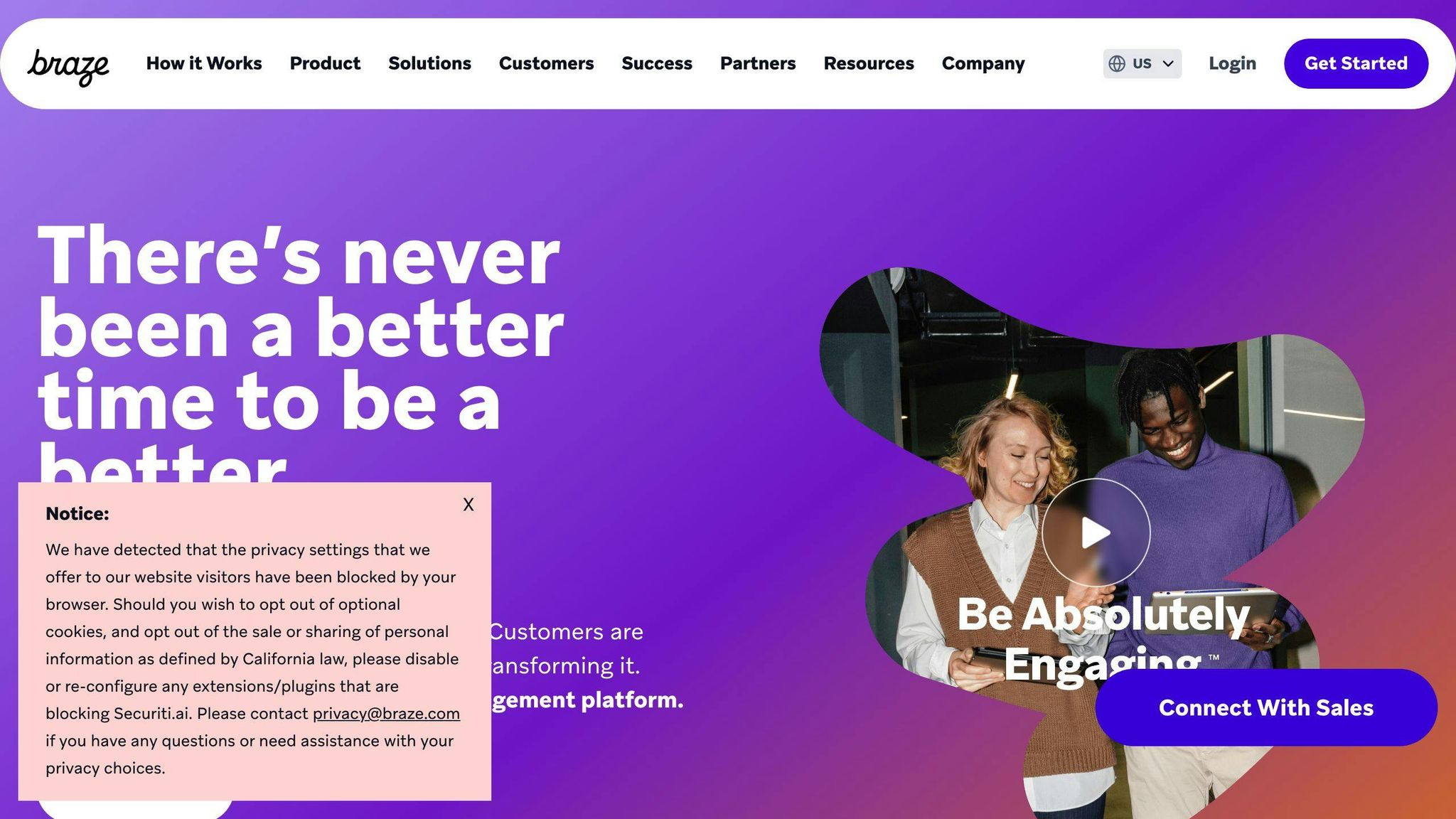
| Feature | Description |
|---|---|
| Overview | Braze enables personalized customer experiences across email, mobile, and web. |
| Key Features | Real-time customer insights, AI-powered predictive analytics. |
| Strengths | Integrates with various data sources. |
| Pricing | Customized plans. Contact sales for a quote. |
| Ideal Use Cases | E-commerce and finance businesses seeking multi-channel personalization. |
Monetate
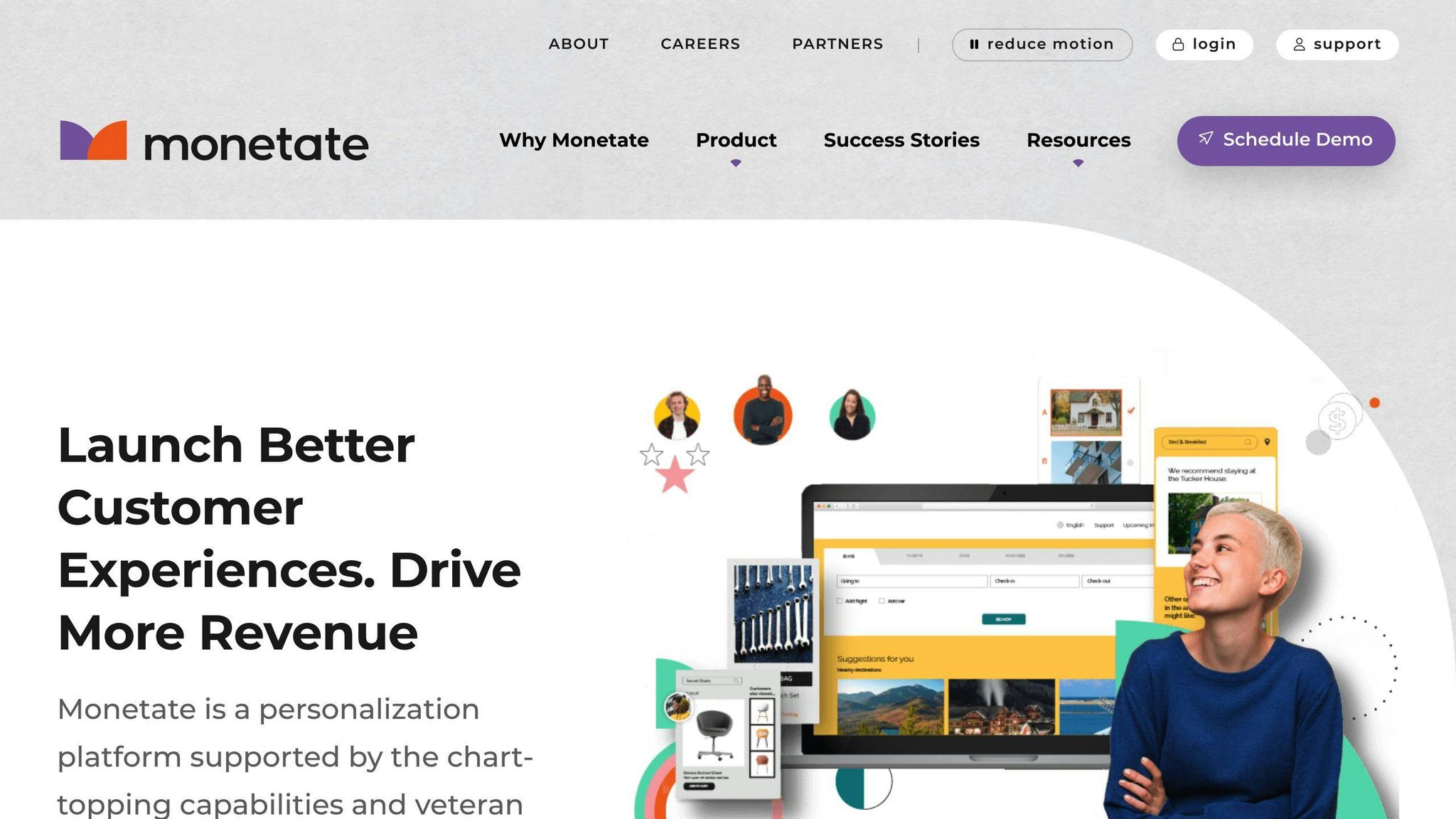
| Feature | Description |
|---|---|
| Overview | Monetate offers 1-to-1 personalization for individualized customer experiences. |
| Key Features | Analyzes customer behavior and preferences, automated content personalization. |
| Strengths | Delivers highly relevant experiences. |
| Pricing | Customized plans. Contact sales for a quote. |
| Ideal Use Cases | E-commerce and retail businesses seeking individualized experiences. |
Dynamic Yield
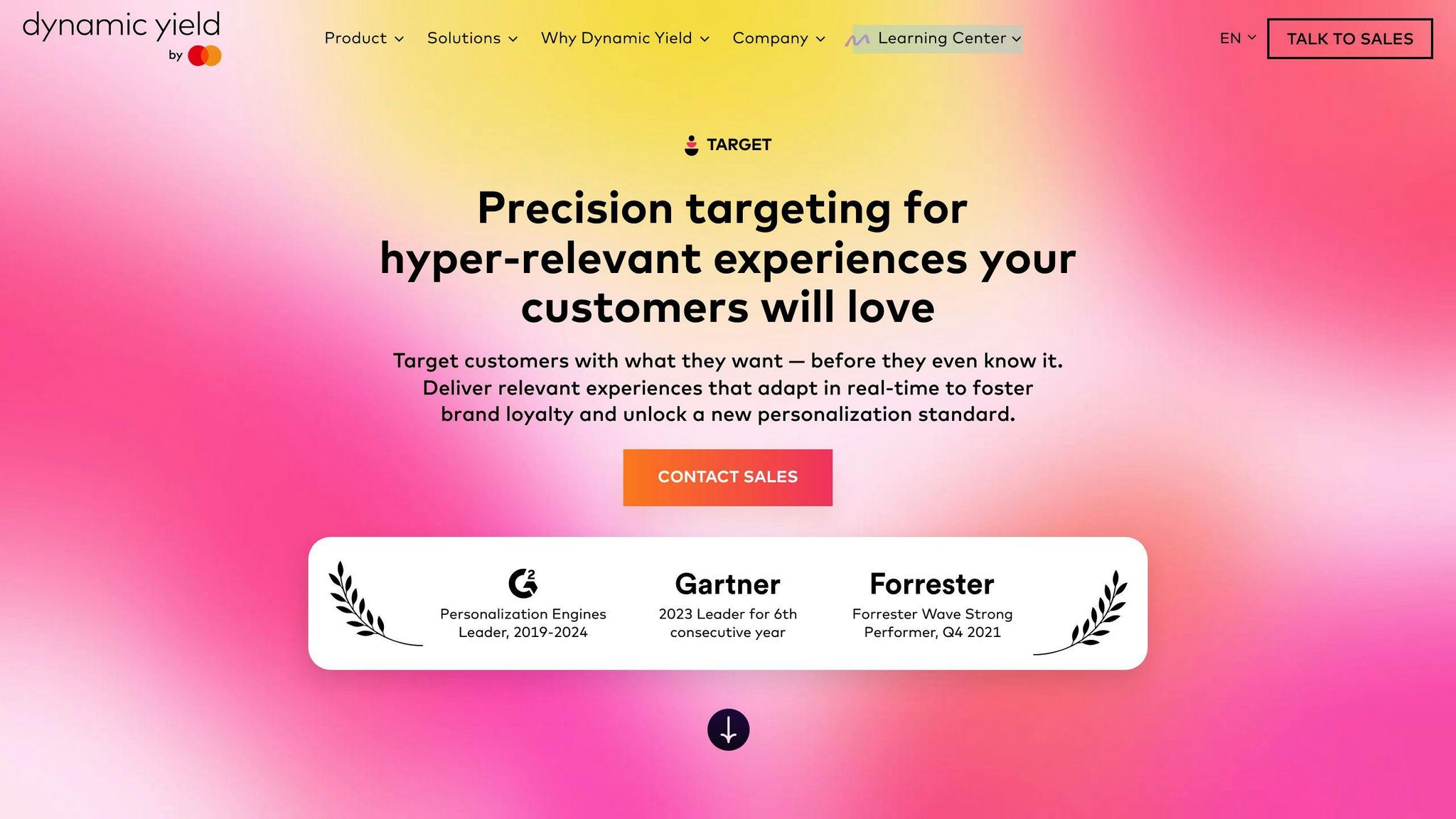
| Feature | Description |
|---|---|
| Overview | Dynamic Yield delivers personalized experiences across web, mobile, and email. |
| Key Features | Analyzes customer behavior and preferences, automated content personalization. |
| Strengths | Delivers highly relevant experiences. |
| Pricing | Customized plans. Contact sales for a quote. |
| Ideal Use Cases | E-commerce and finance businesses seeking multi-channel personalization. |
CleverTap
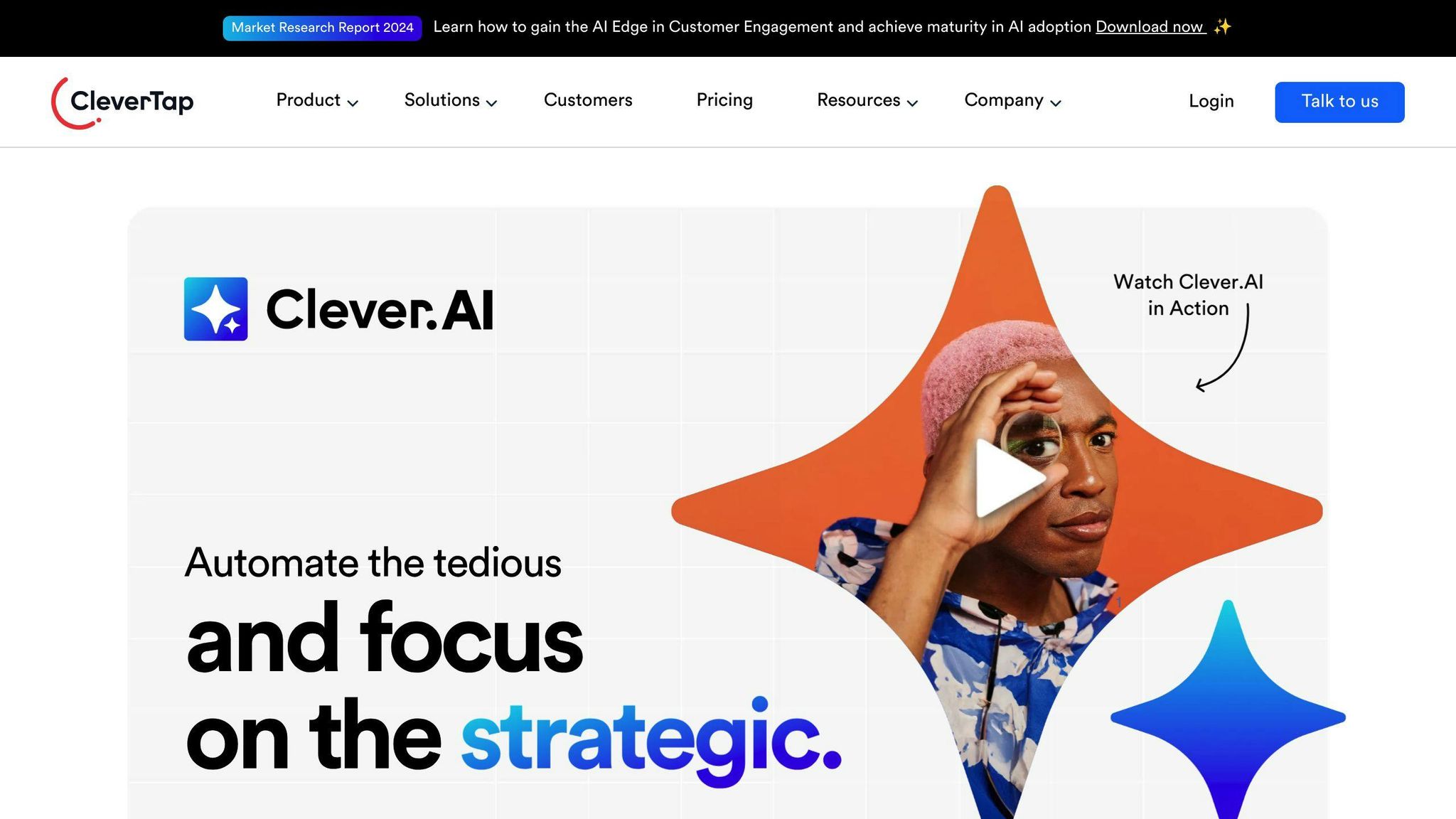
| Feature | Description |
|---|---|
| Overview | CleverTap focuses on creating personalized experiences through mobile. |
| Key Features | Analyzes mobile customer behavior and preferences, automated content personalization. |
| Strengths | Delivers highly relevant mobile experiences. |
| Pricing | Customized plans. Contact sales for a quote. |
| Ideal Use Cases | E-commerce and finance businesses focusing on mobile personalization. |
Salesforce Marketing Cloud
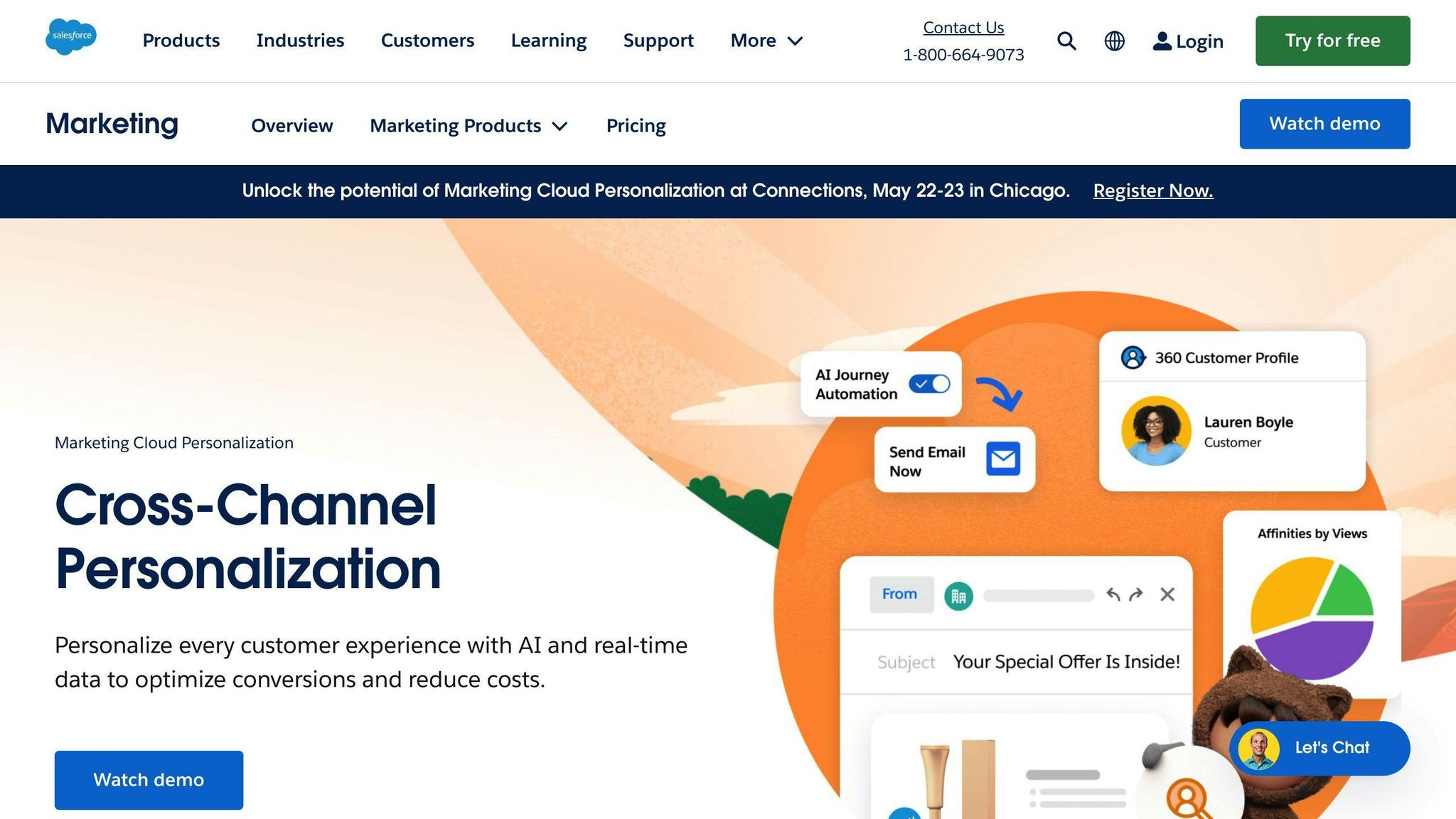
| Feature | Description |
|---|---|
| Overview | Salesforce Marketing Cloud delivers personalized experiences across email, mobile, and web. |
| Key Features | Integrates with various Salesforce products. |
| Strengths | Creates seamless customer experiences. |
| Pricing | Customized plans. Contact sales for a quote. |
| Ideal Use Cases | E-commerce and finance businesses seeking multi-channel personalization. |
Adobe Experience Cloud

| Feature | Description |
|---|---|
| Overview | Adobe Experience Cloud offers personalized experiences through its suite of products. |
| Key Features | Integrates with various Adobe products, AI-powered predictive analytics. |
| Strengths | Creates seamless customer experiences. |
| Pricing | Customized plans. Contact sales for a quote. |
| Ideal Use Cases | E-commerce and finance businesses seeking multi-channel personalization. |
Implementing AI Personalization Engines
Implementing an AI personalization engine requires a clear plan to ensure effective data collection, integration, and management. Here’s a step-by-step guide to help you get started, along with strategies for data collection, setting up personalization rules, and the importance of testing and optimization.
Step-by-Step Implementation Guide
- Define Goals and Objectives: Identify what you want to achieve with personalization.
- Choose an AI Personalization Engine: Select an engine that fits your business needs.
- Collect and Integrate Data: Gather customer data from sources like website analytics, social media, and customer feedback.
- Set Up Personalization Rules and Campaigns: Configure rules and campaigns based on customer behavior and preferences.
- Test and Optimize: Continuously test and refine your personalization efforts.
Data Collection and Integration Strategies
Effective data collection and integration are key. Here are some strategies:
- Use APIs and SDKs: Collect data from various sources like website analytics and social media.
- Integrate with CRM Systems: Gather customer data and behavior.
- Use Data Management Platforms: Collect, integrate, and manage customer data.
Setting Up Personalization Rules and Campaigns
To set up personalization rules and campaigns, follow these steps:
- Define Target Audiences: Segment customers based on behavior, preferences, and demographics.
- Configure Personalization Rules: Set rules based on target audiences and business goals.
- Create Personalized Content: Develop content like product recommendations and offers.
- Run Campaigns: Deliver personalized content to your target audiences.
Testing, Optimization, and Continuous Learning
Testing and optimization are crucial for improving personalization. Here are some strategies:
- Use A/B Testing: Compare different personalization strategies.
- Analyze Customer Feedback: Identify areas for improvement.
- Refine Personalization Rules: Update rules based on customer behavior and feedback.
Overcoming Implementation Challenges
Implementing an AI personalization engine can be challenging. Here are some common challenges and solutions:
| Challenge | Solution |
|---|---|
| Data Quality Issues | Ensure accurate and complete data collection. |
| Technical Integration Challenges | Use APIs and SDKs for seamless data collection. |
| Lack of Resources | Allocate sufficient budget and personnel for implementation and maintenance. |
Future of AI Personalization Engines
The future of AI personalization engines is promising, with advancements making one-to-one marketing experiences more achievable. New AI technologies like generative AI, reinforcement learning, and edge computing will enhance these systems' ability to understand and predict complex customer behaviors.
Emerging Trends and Innovations
AI will integrate with technologies like augmented reality (AR) and virtual reality (VR), creating new personalization opportunities. For example, retailers could use AI-powered AR to let customers virtually try on clothes. Conversational AI, such as chatbots and virtual assistants, will also become more common, offering personalized support and recommendations.
Impact of Advanced Technologies
Advanced technologies will significantly impact AI personalization engines:
| Technology | Impact |
|---|---|
| Generative AI | Creates personalized content in a human-like way, tailored to user needs. |
| Edge Computing | Enables faster data processing for quicker personalization. |
| Reinforcement Learning | Optimizes personalization rules and campaigns, improving engagement and conversions. |
Industry Applications
AI personalization engines can benefit various industries:
| Industry | Benefits |
|---|---|
| E-commerce | Personalized product recommendations, offers, and content, leading to higher conversions and loyalty. |
| Finance | Personalized financial advice, investment recommendations, and customer support, improving satisfaction and retention. |
| Healthcare | Tailored health advice and treatment plans, enhancing patient care. |
| Education | Customized learning experiences, improving student engagement and outcomes. |
Conclusion
Key Takeaways
This guide has covered AI personalization engines, their key parts, benefits, and top options for 2024. We also looked at future trends and how these engines can be used in different industries.
Implement AI Personalization
AI personalization engines can help you create better customer experiences, increase sales, and build loyalty. Start by exploring the top AI personalization engines mentioned in this guide.
Final Thoughts
AI personalization is growing, and businesses that use these tools will benefit. Stay updated with new AI developments to keep your customers happy and drive your business forward.
Summarize with AI
Related Posts
AI-Powered Upselling & Cross-Selling: 2024 Guide
Explore AI-powered upselling and cross-selling strategies for 2024, including key benefits, challenges, best practices, and real-world success stories to drive revenue and customer loyalty.
AI for Complex Customer Service: Guide [2024]
Learn how AI can improve complex customer service, provide personalized responses, and enhance user experience. Discover the benefits, strategies, and future trends in AI for customer inquiries.
Artificial Intelligence for Customer Experience: A Primer
Discover how artificial intelligence (AI) is enhancing customer experience, from automating repetitive tasks to predicting future behaviors. Explore real-world examples and best practices for implementation.
9 AI Personalization Strategies for 2024
Discover 9 AI personalization strategies for 2024 that can boost customer satisfaction, engagement, and revenue. Learn how AI-powered personalization can shape customer experiences.
